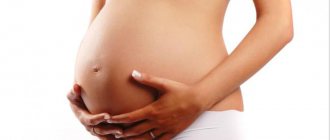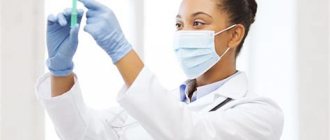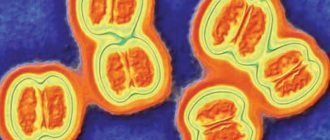Compatibility with other vaccines
Vaccination against mumps can be carried out simultaneously (on the same day) with other vaccinations included in the National Vaccination Calendar (vaccinations against measles, rubella, polio, hepatitis B, whooping cough, diphtheria, tetanus, influenza, Haemophilus influenzae) provided they are administered in different areas body or no earlier than 1 month after the previous vaccination. After the administration of human immunoglobulin preparations, vaccinations against mumps are carried out no earlier than 2 months later. After administration of the Mumps vaccine, immunoglobulin preparations can be administered no earlier than 2 weeks later. If it is necessary to use immunoglobulin earlier than this period, vaccination against mumps should be repeated.
Principles and purposes of vaccination
Vaccination is included in the mandatory calendar of preventive vaccinations due to the risk of complications during mumps. An insufficiently high level of vaccination coverage with the mumps vaccine (less than 80%) can lead to undesirable epidemiological changes - a shift in the incidence of mumps to older age groups of the population. By the end of 2013, mumps vaccine had been introduced nationally in 120 countries.
Prevention consists of vaccinating children with a live mumps vaccine in accordance with the vaccination schedule.
Contraindications
Only a doctor can decide whether Mumps is suitable for vaccination
The Mumps vaccine is contraindicated if there is a history of an allergic reaction to any component of the vaccine, as well as in cases where the patient:
- Anaphylactic reactions or severe forms of allergic reactions to aminoglycosides (gentamicin sulfate), chicken and/or quail eggs have previously been observed.
- There are primary immunodeficiency states, malignant blood diseases and neoplasms.
- A previous severe reaction (temperature rise above 40 C, hyperemia and/or swelling more than 8 cm in diameter at the site of vaccine administration) or a complication to a previous administration of mumps or mumps-measles vaccines has been observed.
- Pregnancy and breastfeeding period.
- Acute diseases or exacerbation of chronic diseases.
Is mumps dangerous?
In most cases, the course of mumps is observed in a mild form, and spontaneous recovery occurs. Possible complications pose a danger:
- pancreatitis;
- meningitis (encephalitis, meningoencephalitis);
- diabetes;
- deafness;
- orchitis leading to infertility.
Parents have to hear about the latter type of complication. It is believed that it is more important to vaccinate boys than girls. However, other types of complications can apply to patients of any gender and age.
There is still no treatment option for mumps; therapy is used only for complications. Without their occurrence, medical intervention is not required. Vaccination is used to prevent the disease.
A fatal outcome from the disease is possible only with inflammation of the brain if medical assistance is not provided in a timely manner.
Possible side effects
- Often
- Rarely, in the first two days after vaccination, local reactions occur, expressed in skin hyperemia and mild swelling at the site of vaccine administration, which go away without treatment. In the period from 5 to 42 days from the moment of vaccination, a slight increase in the parotid salivary glands may occur, which goes away on its own within 2-3 days. Restlessness, lethargy, and sleep disturbances may also occur.
- Very rarely, allergic reactions appear in the first two days. In the period after 2-4 weeks - benign serous meningitis or painful short-term swelling of the testicles.
in the period from 5 to 15 days after vaccination, a short-term slight increase in body temperature and catarrhal phenomena in the nasopharynx (mild hyperemia of the pharynx, rhinitis) occur. An increase in body temperature above 38.5 C in the post-vaccination period is an indication for the prescription of antipyretics.
Considering the possibility of developing immediate allergic reactions (anaphylactic shock, Quincke's edema, urticaria) in particularly sensitive individuals, vaccinated persons must be provided with medical supervision for 30 minutes.
Come get vaccinated at MiracleChildren. A full range of vaccines for children and adults, family vaccinations - at a special price!
Mumps vaccine live 1 dose N10 lyophilisate for the preparation of solution for subcutaneous administration
Description
Lyophilisate for preparing a solution for subcutaneous administration 1 dose
mumps virus not less than 20,000 TCD50
Release form
1 dose - ampoules (10) - cardboard packs.
pharmachologic effect
The vaccine stimulates the production of antibodies to the mumps virus in seronegative children, reaching a maximum level 6-7 weeks after vaccination. The drug meets WHO requirements.
Indications
- prevention of mumps.
Routine vaccinations are carried out twice at the ages of 12 months and 6 years for children who have not had mumps.
Emergency prophylaxis is carried out for children from 12 months of age, adolescents and adults who have had contact with someone with mumps, who have not had mumps, or who have not previously been vaccinated against this infection.
In the absence of contraindications, the vaccine is administered no later than 72 hours from the moment of contact with the patient.
Dosage regimen
Immediately before use, the vaccine is diluted with a solvent for measles, mumps and mumps-measles cultured live vaccines (hereinafter referred to as the solvent) at the rate of 0.5 ml of solvent per one vaccination dose of the vaccine.
The vaccine should completely dissolve within 3 minutes. The dissolved vaccine is a clear, pink liquid.
The vaccine and solvent in ampoules with damaged integrity, labeling, changes in their physical properties (color, transparency, etc.), expired or improperly stored are not suitable for use.
The opening of ampoules and the vaccination procedure are carried out in strict compliance with the rules of asepsis and antiseptics.
Ampoules with vaccine and solvent at the incision site are treated with 70% alcohol and broken off, while preventing alcohol from getting into the ampoule.
To dilute the vaccine, select the entire required volume of solvent and transfer it to an ampoule with dry vaccine. After mixing, the vaccine is drawn into a sterile syringe with another needle and used for vaccination.
The vaccine is administered subcutaneously in a volume of 0.5 ml under the shoulder blade or into the shoulder area (at the border between the lower and middle third of the shoulder from the outside), having previously treated the skin at the site of vaccine administration with 70% alcohol.
The dissolved vaccine is used immediately and cannot be stored.
The vaccination performed is registered in the established registration forms, indicating the name of the drug, date of vaccination, dose, manufacturer, batch number, expiration date, reaction to the vaccine.
Side effect
In most children, the vaccination process is asymptomatic. Some children may experience:
- from 5 to 15 days - temperature reactions, catarrhal symptoms from the nasopharynx (hyperemia of the pharynx, rhinitis);
- from 5 to 42 days - a slight increase in the parotid salivary glands lasting 2-3 days;
- in rare cases, in the first 48 hours after vaccination, local reactions expressed in skin hyperemia and mild swelling at the site of vaccine administration, which go away without treatment.
With mass use of the vaccine, an increase in body temperature above 38.5°C should not occur in more than 2% of vaccinated children.
Complications that develop extremely rarely include allergic reactions that occur in the first 24-48 hours in children with altered reactivity. It is extremely rare that vaccinated people may develop benign serous meningitis after 2-4 weeks. Each case of serous meningitis requires differential diagnosis.
An increase in body temperature above 38.5°C in the post-vaccination period is an indication for the prescription of antipyretics.
Contraindications for use
- severe forms of allergic reactions to aminoglycosides (gentamicin sulfate) and chicken eggs;
— primary immunodeficiency conditions, malignant blood diseases and neoplasms;
- severe reaction (temperature rise above 40°C, hyperemia and/or swelling more than 8 cm in diameter at the site of vaccine administration) or complication to a previous administration of mumps or mumps-measles vaccines;
- pregnancy.
In order to identify contraindications, the doctor (paramedic) on the day of vaccination conducts a survey and examination of the vaccinated person with mandatory thermometry. If necessary, carry out appropriate laboratory testing.
HIV infection is not a contraindication to vaccination.
Persons temporarily exempt from vaccinations must be placed under observation and registration and vaccinated after the contraindications are lifted.
Use during pregnancy and breastfeeding
Contraindicated during pregnancy.
Use in children
Use according to indications.
special instructions
Vaccinations are carried out:
- after acute infectious and non-infectious diseases, after exacerbation of chronic diseases - after the end of acute manifestations of the disease;
- for mild ARVI, acute intestinal diseases, etc. - immediately after the temperature normalizes;
— after immunosuppressive therapy, vaccination is carried out 3-6 months after the end of treatment;
— vaccination against mumps is not recommended during periods of increased incidence of serous meningitis.
Drug interactions
Vaccination against mumps can be carried out simultaneously (on the same day) with other calendar vaccinations (against measles, rubella, polio, hepatitis B, whooping cough, diphtheria, tetanus) or no earlier than 1 month after the previous vaccination.
After the administration of human immunoglobulin preparations, vaccinations against mumps are carried out no earlier than 2 months later. After administration of the mumps vaccine, immunoglobulin preparations can be administered no earlier than 2 weeks later; If it is necessary to use immunoglobulin earlier than this period, vaccination against mumps should be repeated.
Storage conditions and periods
The vaccine is stored and transported in accordance with SP 3.3.2.1248-03 at a temperature of 0 to 8 ° C out of the reach of children.
The shelf life of the vaccine is 15 months. A drug that has expired cannot be used.
Conditions for dispensing from pharmacies
For medical and preventive institutions.
Types of possible complications
Normal reactions include a slight increase in temperature and redness at the injection site. There is no need to take any special measures for such manifestations.
To make vaccination easy, you need to:
- make sure the child is healthy;
- drink a normal amount of fluid before and after vaccination;
- temporarily limit the consumption of sweets;
- Do not eat about an hour before the procedure.
It will not be superfluous to temporarily exclude allergenic foods from the diet: chocolate, strawberries, citrus fruits. To reduce the risk of an allergic reaction, it is recommended to take antihistamines in advance.
About the disease
The causative agent of the disease is an RNA virus that is transmitted by airborne droplets. Any person between the ages of one and 40 years who has not previously been ill and has not been vaccinated can become infected.
Mumps has a detrimental effect on the tissues of the glandular structure, which often affects the parotid, submandibular and salivary glands. The development of infection in almost all cases is acute; complications may develop that affect the quality of life in the future:
- inflammation of the pancreas;
- deafness;
- damage to the meninges and brain matter, meningoencephalitis, encephalitis;
- orchitis;
- In girls, inflammation of the appendages is possible.
To date, no specific treatment has been developed. There is only one way to protect yourself from this infectious disease - by administering the mumps vaccine.









